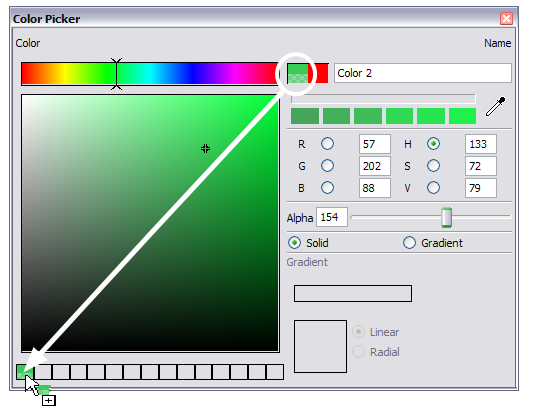

In the Colour Palette view, click the Menu button and select Style > Delete Style. In the Colour Palette view, select the palette you want to delete a style from. If a style is not needed anymore, you can delete it from the Style list. In the Colour Palette view, open the Style list and select the palette style to use for the current scene.
Toon boom studio transparent how to#
Refer to the Planning Your Project topic in the Starting Your Project chapter to learn how to create scenes. In the Colour Palette view, you can modify the colours individually by using the Colour Picker window or all at once using the Tint Panel window. In the Colour Palette view, click the Menu button and select Style > Rename Style. In the Colour Palette view, click the Menu button and select Style > Duplicate Style. In the Colour Palette view, select the palette you want to create a new style for. There is no need to repaint the animation, only to create or import a clone palette (palette style). Depending on the selected style (night or day), the painted drawing updates. The colours have the same identification number pointing to the same colour painted zones, the same names, but the swatches can be different colours. The colours in each palette have the same properties. The palette style is a copy of the main palette.

As an alternative, you can create a palette style. It can be difficult and time-consuming to repaint everything and creating two independent palettes can be quite complex. The night palette is a popular choice when a scene or sequence changes from day to night. In the Colour Palette view, click the Menu button and select Palette > Rename Palette.Ī character usually has one colour palette, although there are times when the characters are placed in different lighting conditions and require a different colour shading. In the Colour Palette view, click the Menu button and select Palette > Duplicate Palette. In the Colour view, select the palette to be duplicated. The original and the duplicate palettes are completely independent.Once a palette is duplicated, you can change whatever you want in it without affecting the first one and vice-versa.

This saves time creating new colour swatches and renaming them. If you have two characters using similar colours and colour pots, you can use the Duplicate palette option to copy the existing palette and modify the new one instead of creating a new palette from scratch. If the palette was in use in your scene, the zones painted with its colours turns red. In the Colour Palette view, click the Menu button and select Palette > Delete Palette.Ī Warning dialog box opens to confirm the operation. In the Colour Palette view, select the palette to remove. You can remove palettes from your Palette list if they are not needed in your scene. In the Colour Palette view, select the palette to rename.Ĭlick the Menu button and select Palette > Rename Palette.

To keep your palette organized, you can rename them to better represent who and what they are used for. In the Palette Name field, type the new palette's name and click OK.Īnalyze the character or background you want to create this palette for and list all the colour swatches you need to paint it.Īdd the colour swatches needed-see Adding a Colour Swatch. The new palette appears in the Colour Palette view. In the Colour Palette view, click the Menu button and select Palette > New Palette. The first step in the palette process is to create a new palette rather than using the default palette to paint all of your drawings. You can create a new palette and add a new colour, known as a colour swatch, for each zone on the character, such as the skin, hair, tongue, shirt, pants, etc. The results are repeatable, no matter who uses the colour paletteĪ palette is created by assigning a set of colours to each character, prop or effect. Standardization and colour consistency throughout the project You cannot accidentally use a colour which is not in the palette


 0 kommentar(er)
0 kommentar(er)
